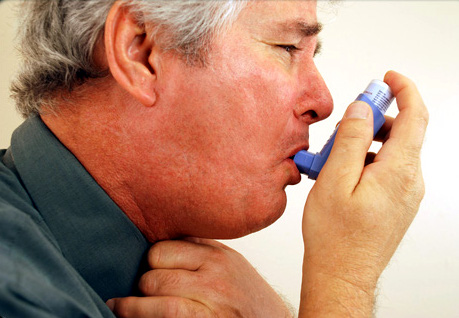 The corner bus stop. That little bench by the beauty parlor. When your lungs can’t get much air, you don’t have the energy to walk far. So all over town, from the grocery store to the bank lobby, you’ve mapped out places where you can stop and catch your breath.
The corner bus stop. That little bench by the beauty parlor. When your lungs can’t get much air, you don’t have the energy to walk far. So all over town, from the grocery store to the bank lobby, you’ve mapped out places where you can stop and catch your breath.
You’re not alone. I’m Letitia Presly-Cantrell from the Centers for Disease Control and Prevention (CDC). As a behavioral scientist, I know that chronic obstructive pulmonary disease, or COPD as it’s commonly known, is a serious lung disease that makes it hard to breathe.

Lets review COPD risk factors, help you recognize symptoms, and help you know when to see your health care provider for a simple breathing test. Before we get practical, let’s talk about the lungs and how they work.
Airways are the tubes that carry air in and out of the lungs through the nose and mouth. Healthy airways and air sacs in the lungs are elastic—they bounce back to their original shape after being stretched or filled with air, the way a new rubber band or balloon does. This elastic quality helps retain the normal structure of the lung and helps move the air in and out quickly.
In people with COPD, the air sacs no longer bounce back to their original shape. The airways can become swollen and mucus production might increase, making it harder to get air in and out of the lungs. Most people who are at risk for getting COPD have never even heard of it. Here are some risk factors:
- shortness of breath, chronic cough, or trouble performing simple daily activities;
- over age 40 and currently smoke or used to smoke;
- if you’ve worked around chemicals, fumes, or dust; and lastly,
- if you have certain genetic conditions.
Symptoms typically include:
- constant coughing, sometimes called “smoker’s cough,”
- shortness of breath,
- excess mucus or phlegm production,
- feeling like you can’t breathe,
- not being able to take a deep breath, and
- wheezing.
When COPD is severe, shortness of breath and other symptoms can get in the way of doing even the most basic tasks, such as light housework, taking a walk, bathing, and getting dressed. Everyone who is at risk for COPD and has symptoms of a cough, excess mucus or phlegm production, or shortness of breath, should be tested for the disease.
The test for COPD is called spirometry. Spirometry can detect COPD before symptoms become severe. It’s a simple, non-invasive breathing test that measures the amount of air a person can blow out of the lungs and how fast he or she can blow it out. Based on this test, your doctor can tell if you have COPD, and if so, how severe it is. The spirometry reading can also help your doctor determine the best course of treatment. With treatment, soon you could be living more and stopping less. Early detection of COPD can change its course and progress.
To help prevent COPD, avoid tobacco use, inhaling tobacco smoke, home and workplace air pollutants, and respiratory infections.
For more information about COPD, please visit www.cdc.gov and type C-O-P-D in the search box, or visit the COPD Learn More Breathe Better® Campaign, at COPD.nhlbi.nih.gov. For the most accurate health information, visit www.cdc.gov or call 1-800-CDC-INFO, 24/7.


